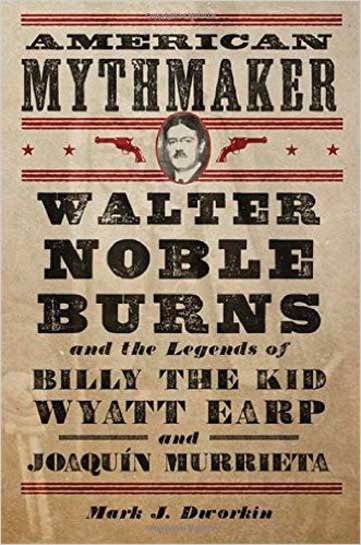American Mythmaker: Walker Noble Burns and the Legends of Billy the Kid, Wyatt Earp and Joaquín Murrieta, by Mark J. Dworkin, University of Oklahoma Press, Norman, 2015, $29.95
 This first full biography of Walter Noble Burns (1872–1932) was the last work of dedicated researcher Mark Dworkin (1946–2012). Although accuracy was not Burns’ primary objective, he made three 19th-century Westerners come to life for the American public in his Wild West trilogy The Saga of Billy the Kid (1926), Tombstone: An Iliad of the Southwest (1927) and The Robin Hood of Eldorado: The Saga of Joaquín Murrieta (1932).
This first full biography of Walter Noble Burns (1872–1932) was the last work of dedicated researcher Mark Dworkin (1946–2012). Although accuracy was not Burns’ primary objective, he made three 19th-century Westerners come to life for the American public in his Wild West trilogy The Saga of Billy the Kid (1926), Tombstone: An Iliad of the Southwest (1927) and The Robin Hood of Eldorado: The Saga of Joaquín Murrieta (1932).
The Kentucky-born Burns was already 60 and a prominent journalist when inspired to write about the Kid after rubbing elbows with El Paso saloon owner Tom Powers, a close friend of Pat Garrett (the man who shot Billy). “The Saga of Billy the Kid,” Dworkin writes, “would take a local tale and recast it as an epic narrative of Western mythology.” Burns’ next subject, Wyatt Earp, was still alive and had another biographer, John Flood, in mind—which made the writing and publication of Iliad an interesting tale in itself. The mythologization of Earp, whom Burns called the “lion of Tombstone” had begun. “In Iliad, as he had in Saga, Burns took real people and transformed them into epic heroes and villains,” Dworkin writes. Flood’s manuscript never was published, though Stuart Lake’s 1931 biography Wyatt Earp, Frontier Marshal was a bestseller that has come to overshadow Burns’ Earp offering. Burns moved away from Old West subjects for a while and then decided to tackle Murrieta, the mythic California bandit, instead of lawman James Butler “Wild Bill” Hickok. That book contained even less truthful history than the first two entries in the Western trilogy, but Dworkin calls Burns’ sympathy for a Hispanic figure “extraordinary.”
Dworkin, who also wrote about Burns in the October 2011 Wild West, had just completed the manuscript when he died (author Jeff Guinn helped prepare the manuscript for publication). Burns often strayed into myth to relate entertaining stories. Dworkin stuck with facts and thoughtful analysis to entertain us with the Burns story.
—Editor
Originally published in the December 2015 issue of Wild West.





